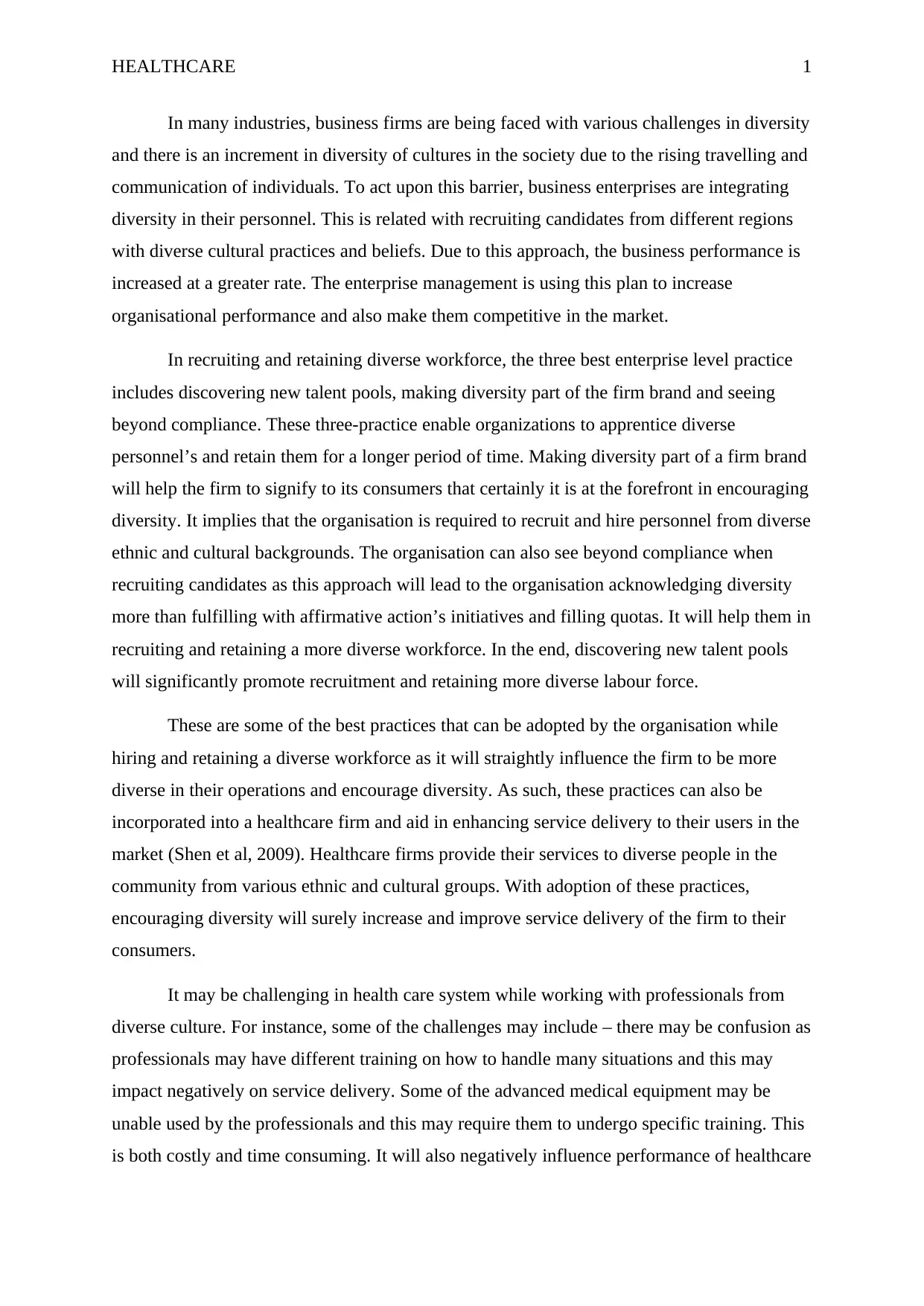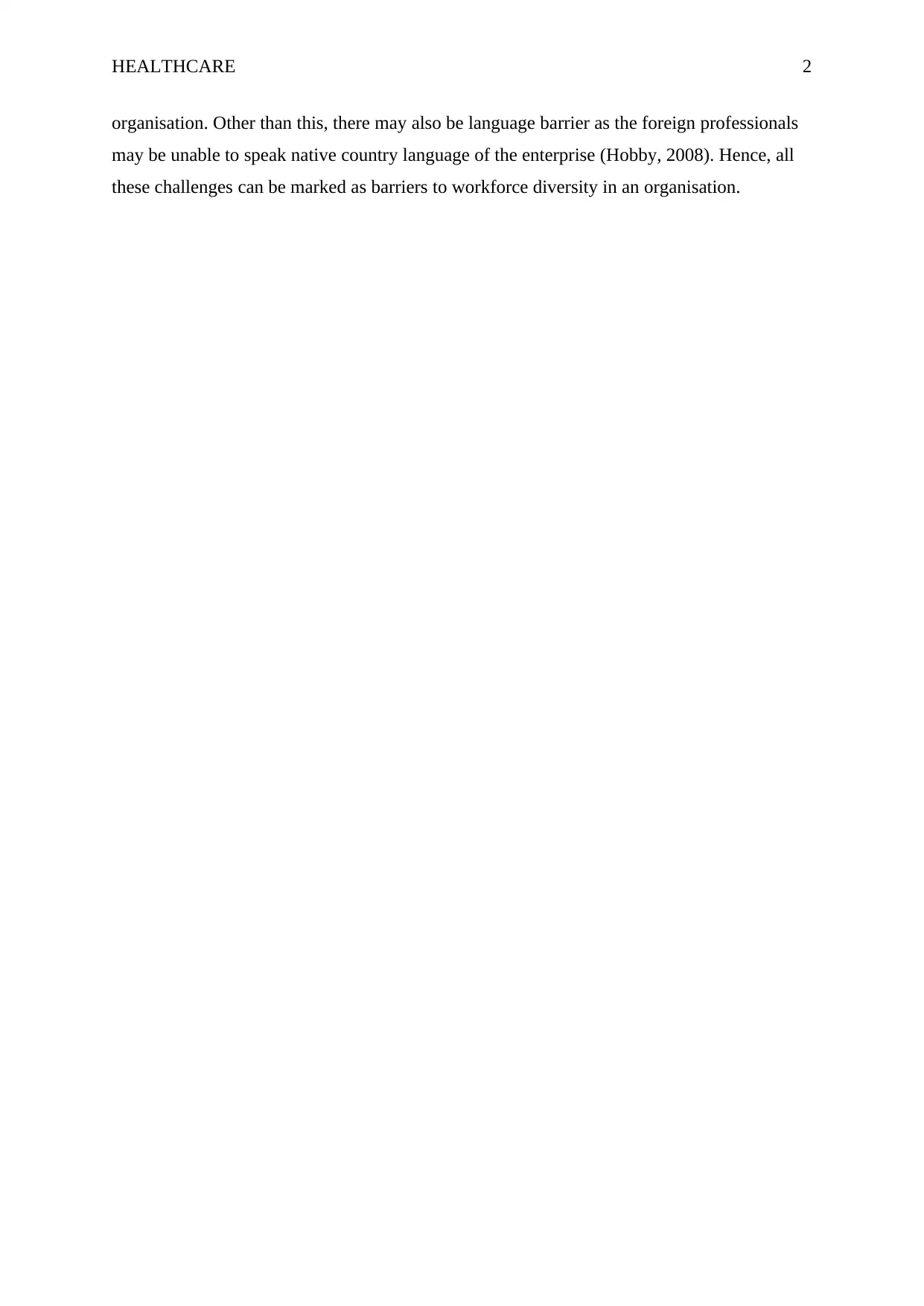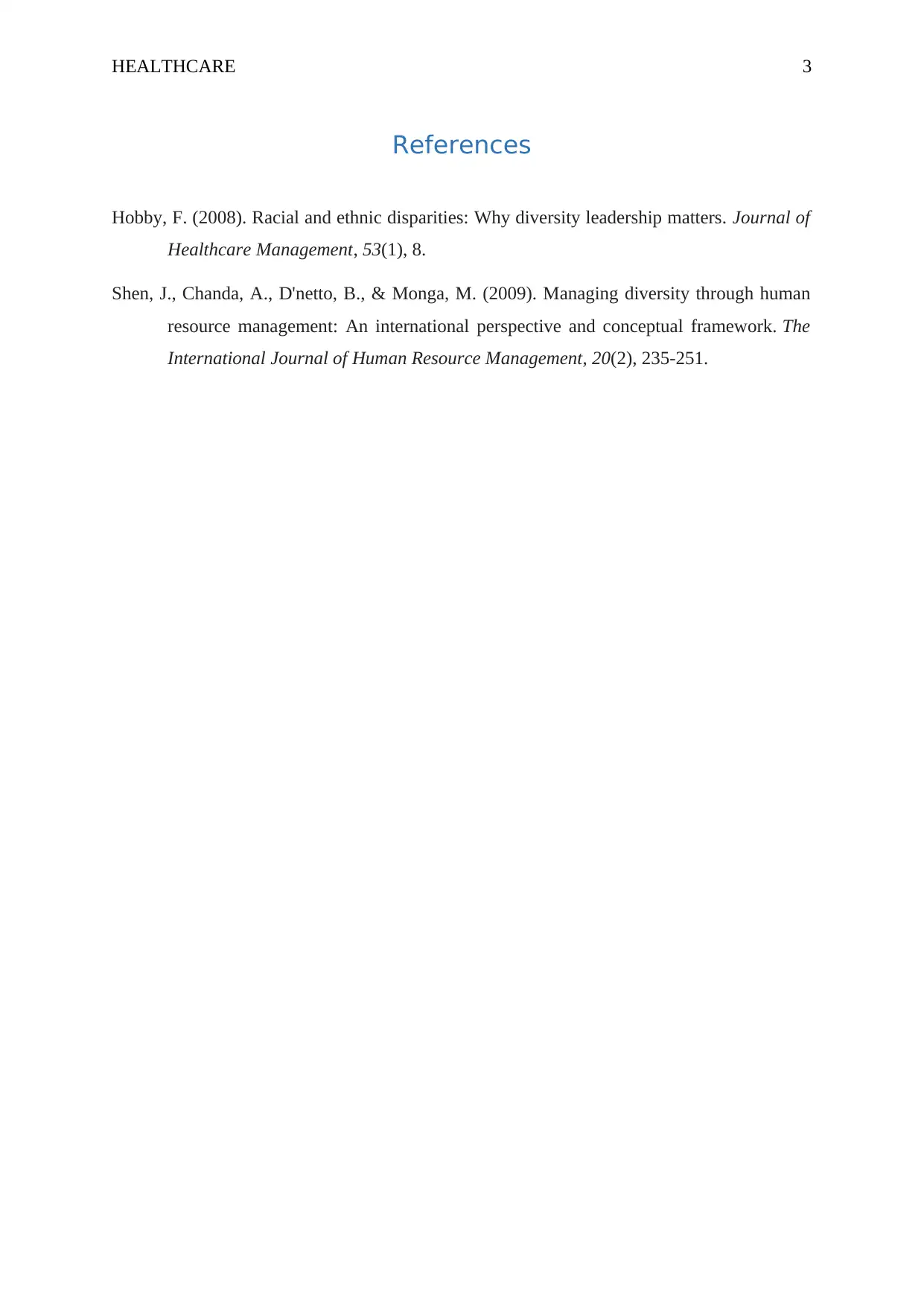Cultural Competency and Workforce Diversity in Healthcare Report
VerifiedAdded on 2022/11/29
|4
|611
|489
Report
AI Summary
This report examines the importance of cultural competency and workforce diversity within the healthcare sector. It begins by highlighting the increasing diversity in society and the need for businesses, including healthcare organizations, to embrace diversity in their workforce. The report discusses how firms can increase diversity in their workforce by recruiting diverse individuals. Best practices such as identifying new talent pools, integrating diversity into the brand, and looking beyond compliance are discussed. The report then applies these concepts specifically to the healthcare industry, emphasizing the need for cultural competency to enhance service delivery to diverse patient populations. The report acknowledges challenges such as potential confusion due to different training backgrounds, the need for specialized training on advanced equipment, and language barriers among foreign professionals. Ultimately, the report emphasizes the positive impact of a diverse workforce on healthcare service delivery, while also acknowledging and addressing potential challenges.
1 out of 4










![[object Object]](/_next/static/media/star-bottom.7253800d.svg)